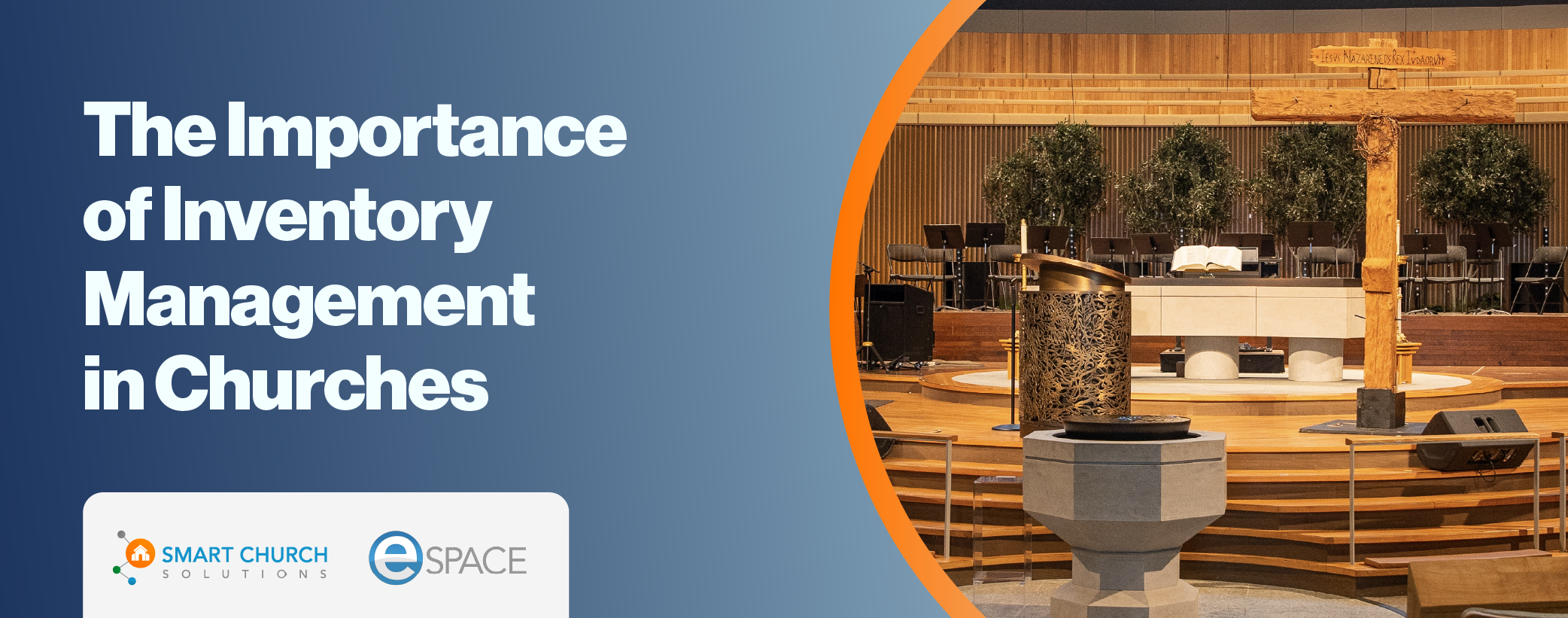Effective inventory management is crucial for churches to ensure that resources are used efficiently and expenditures are controlled. This involves not only knowing what items are on hand but also managing how they are used, stored, and replenished. Whether it’s chairs for services, projectors for meetings, or consumables like cleaning supplies, understanding what you have and what you need is the first step toward better stewardship.
In this guide, we’ll walk you through assessing your current inventory, introduce ways to streamline your tracking with technology, and outline best practices for organizing, maintaining, and managing church resources. Whether you’re overseeing event equipment, durable assets, or everyday consumables, a clear inventory system will help your church operate more efficiently and steward its resources faithfully.
Identifying What You Have
The initial step in managing church inventory is to conduct a thorough assessment of what items are currently in possession. This includes everything from furniture and electronics to kitchen supplies and maintenance tools. The key is to distinguish between necessary items and those that are redundant or no longer serve a purpose. Unneeded items should be sold, donated, or recycled to streamline your inventory and free up storage space.

Utilizing Technology for Inventory Management
Technology can greatly improve the accuracy and efficiency of church inventory management. Platforms like eSPACE provide specialized tools for tracking inventory items, including supplies, event resources, and equipment.
By integrating inventory management into eSPACE, churches can automate key tasks like monitoring stock levels, scheduling replenishments, and assigning inventory to specific events or spaces. This streamlines operations, prevents shortages, and helps ensure that resources are available when and where they’re needed.

Inventory Types and Management Systems
Church inventory isn’t one-size-fits-all. Different types of resources require different tracking methods and management approaches. By organizing inventory into clear categories, churches can better monitor how items are used, where they’re stored, and when they need to be replenished or maintained. Below are common inventory types churches should track and the best practices for managing each.
- Event Resources:
- Items used in church events, such as tables, chairs, and decorations, can be categorized and managed through event scheduling tools within eSPACE. This ensures that resources are allocated properly and prevents overbooking.
- By assigning inventory to specific spaces, you ensure that items are where they need to be, reducing the time spent moving resources across the facility.
- Equipment and Asset Management:
- Durable assets like HVAC systems and kitchen appliances require regular maintenance. Tracking when and how often these items are serviced helps in making informed decisions about repairs or replacements.
- Consumable items, such as office supplies and janitorial products, should be tracked to monitor usage patterns and adjust ordering schedules accordingly.
Streamlining Inventory with eSPACE
eSPACE not only helps track the physical items but also provides valuable data on inventory usage and maintenance schedules. This data is crucial for:
- Planning budgetary allocations for upcoming cycles.
- Ensuring that the church does not over-purchase or run out of necessary supplies.
- Assigning inventory to specific events or functions through the platform’s scheduling features.
Inventory Tracking Best Practices
Even with a good inventory system in place, consistent processes are essential to keeping everything organized and running smoothly. By following a few simple best practices, churches can maintain accurate records, reduce waste, and ensure resources are available when needed. These habits also reinforce accountability and support wise stewardship of the church’s physical resources.
- Regular Audits: Conduct regular physical audits of your inventory to ensure accuracy in your tracking system. This helps identify discrepancies early and maintain accountability.
- Clear Labeling and Storage: Clearly label all items and designate specific storage areas for different types of inventory. This practice helps in quick identification and reduces the time spent searching for items.
- Training and Accountability: Train staff and volunteers on proper inventory procedures to ensure everyone understands how to use and manage church resources. Establishing accountability helps prevent loss and misuse of inventory.
Enhancing Church Operations Through Effective Inventory Management
Proper inventory management is not just about keeping track of supplies and equipment; it’s about enhancing the operational efficiency and financial stewardship of the church. By implementing a clear, organized inventory system and utilizing tools like eSPACE, churches can ensure that resources are used wisely, readily available when needed, and aligned with the ministry’s goals and activities.








